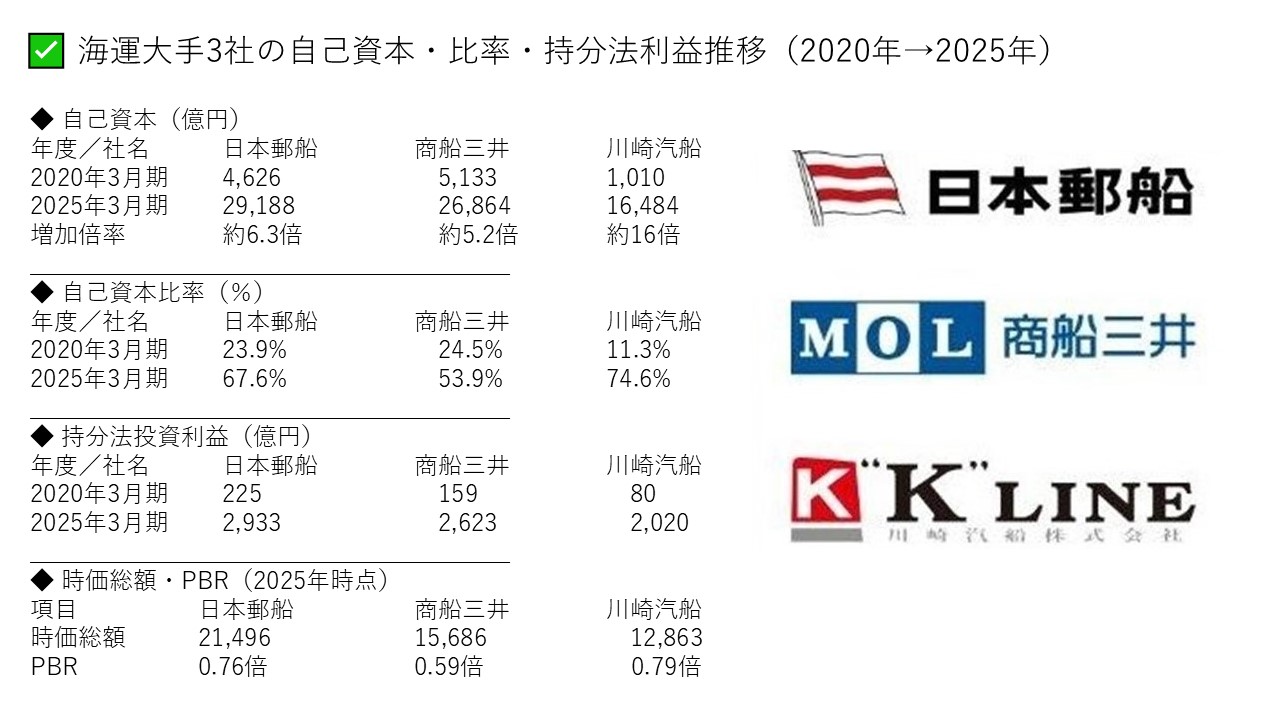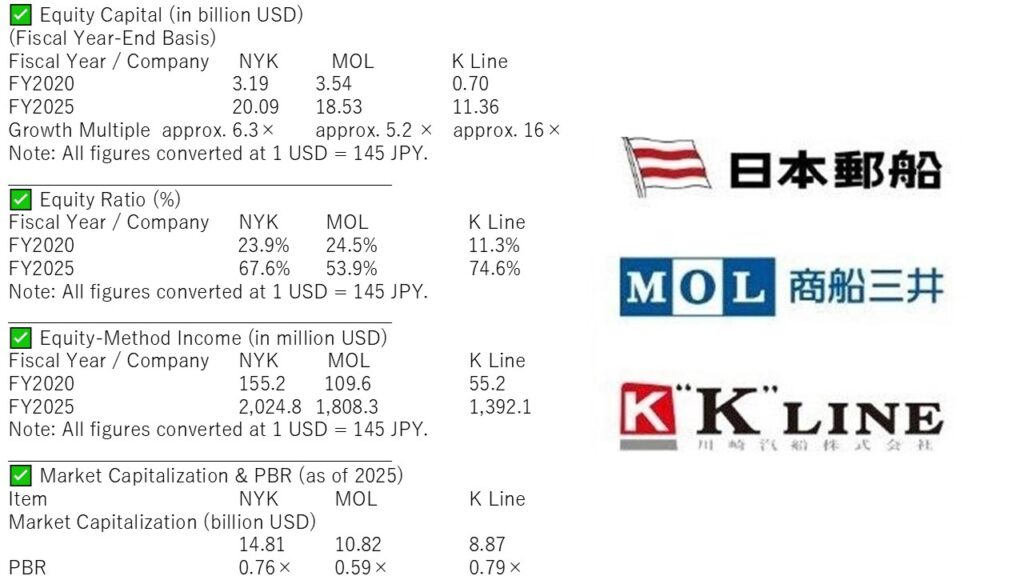Why PBRs Remain Low Major Shipping Despite the Nikkei Hitting Record Highs 日経平均が過去最高も海運大手のPBRが低い理由

Equity Capital Has Soared While Market Caps Lag Behind
自己資本が急増、時価総額が追い付かず
As the Nikkei Stock Average trades at a historic level in the 48,000-yen range on the Tokyo market, the Price-to-Book Ratio (PBR) levels of NYK, MOL and K Line remain sluggish.
Key Points of the Article
→ The PBRs of the three major shipping companies range from 0.59 to 0.79 times, falling below the benchmark level of one. In reality, this is not because investor sentiment or share prices for the major shipping firms are low, but because their equity capital has surged fivefold to as much as sixteenfold over the five years from the financial year ending March 2020 to the financial year ending March 2025.
→ Since 2020, there has been no sector among other heavy industries such as steel, electric power or oil—industries classified alongside shipping as “heavy and large-scale”—that has seen such a dramatic increase in equity capital. The current PBR levels of the three major shipping firms can be described as the result of the exceptional performance they have accumulated over the past five years, a rarity even on the TSE Prime Market.

“You can read the rest of the article in both English and Japanese.” (続きは英語と日本語で書かれた本文でお読みください)
日経平均が過去最高も海運大手のPBRが低い理由 自己資本が急増、時価総額が追い付かず
東京株式市場で日経平均株価が4万8000円台と過去水準で推移する中、日本郵船、商船三井、川崎汽船のPBR(Price-to-Book Ratio、株価純資産倍率)水準が伸び悩んでいる。
この記事のポイント
→海運大手3社のPBRは0.59倍~0.79倍と指標となる1倍を割り込む。実は、これは海運大手の投資家の評価や株価が低い訳ではなく、海運大手3社の自己資本が2020年3月期から2025年3月期の5年間で5倍から最大16倍まで急増したためである。
→鉄鋼や電力、石油など海運と同じ「重厚長大」産業でここまで自己資本が飛躍的に増加した業種は2020年以降ない。海運大手3社の現在のPBR水準は、過去5年間で海運大手3社が東証プライム市場でも稀にみる好業績を積み上げた結果とも言える。
You can read the rest of the article in both English and Japanese.”(続きは英語と日本語で書かれた本文でお読みください)








コメント